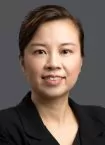Keywords: compensation ordinance, injury by accident, ECO
On 10 May 2013, the Court of Final Appeal handed down a ruling in Sit Wing Yi Sibly (acting for herself and on behalf of the other members of the family of Cheung Kai Wai, Randie, deceased) v. Breton Industrial Limited [2012] FACA 3 concerning the meaning of the expression "injury by accident" in s. 5(1) of the Employees' Compensation Ordinance (ECO) (the Ordinance) and the effect of the presumption under s. 5(4)(a).
Section 5(1) of the Ordinance provides that "if in any employment, personal injury by accident arising out of and in the course of the employment is caused to an employee, his employer shall be liable to pay compensation in accordance with this Ordinance".
Section 5(4)(a) of the Ordinance lays down the presumption that "an accident arising in the course of an employee's employment shall be deemed, in the absence of evidence to the contrary, also to have arisen out of that employment".
The decision is significant because it reaffirms the law that the accident must be distinct from the injury, with the accident being at least a contributory cause and the injury being the effect. Further, the burden of proving "an accident" is on the claimant. It is for the claimant to show that an accident had occurred, i.e., any specific act or event or occurrence of a mishap which resulted in injury or death.
Background
In this case, the employee (Cheung) was employed as a merchandiser based in Dongguan, China. He was found slumped on the floor of the toilet with blood on his nose and mouth during working hours. He died before arriving at the hospital. There were no suggestions of a slippery floor in the toilet, stress induced by over-work or exposure to dangerous substance at work.
His co-workers reported that there was no evidence of physical distress. Both the hospital and the parties' pathology experts were unable to ascertain the cause of death. Although Cheung had had pulmonary tuberculosis and had coughed up blood in the past, there was insufficient evidence to suggest that the death was due to a pre-existing condition. No autopsy was performed before cremation.
The widow applied for employees' compensation against the employer under the Ordinance. The employer denied that there was an accident, or that Cheung's death arose out of, in the course of, or in connection with the employment.
Court's Decision
The widow's claim was dismissed by the District Court in October 2010, and her subsequent appeal to the Court of Appeal and the Court of Final Appeal were likewise dismissed in July 2011 and May 2013, respectively.
In the District Court, the Judge held that, on balance of probabilities, there was insufficient evidence to conclude the deceased died from an accident that caused the injury.
The widow appealed against the Judge's decision. Counsel for the widow argued that Cheung's death was "an accident" because it was an unexpected event (it was not accounted for by his known medical history). Also, since it occurred during his working hours, it arose in the course of his employment. By virtue of the presumption under s.5(4), it should also be deemed, in the absence of evidence to the contrary, to have arisen out of that employment.
The Court of Appeal rejected this argument and stated that the concepts of "injury" and "accident" are distinct. A claimant for compensation must show that there has been an accident that produced the injury. For example, death by disease alone would not qualify for compensation even if the cause is unknown (and thus unexpected). To qualify as an accident, the death would have to have been accelerated by a particular act of exertion in the course of employment. Even if there was an "internal accident", i.e., psychological change invisible from outside the body, it must still have been brought about by an undesigned untoward event.
The claimant's appeal to the Court of Final Appeal also failed. The Court of Final Appeal agreed with the Court of Appeal that the accident must be distinct from the injury, with the accident being at least a contributory cause and the injury being the effect. Also, the presumption under s. 5(4) will not arise if the claimant cannot prove that "an accident" has occurred. On the facts, without evidence of the cause of death, the claimant fails to discharge the burden of proving that an accident has occurred and hence the presumption under s. 5(4)(a) does not arise.
Takeaway
- Where there are unusual or suspicious circumstances (e.g., where an employee was found unconscious during working hours, or where an employee suffered a heart attack during working hours), one should consider whether an act or event constitutes "an accident" within the meaning of legislation before considering whether it occurred in the course of his/her employment.
- The burden of proving "an accident" is on the claimant. The Ordinance does not presume that an injury is caused by an accident. The accident itself has to be proven.
- Collection of circumstantial evidence (e.g., type of work performed by the employee prior to the accident, the employee's pre-existing conditions, weather conditions, etc.) would be relevant in determining whether "an accident" has occurred.
Previously published September 9, 2013
Learn more about our Hong Kong office and Employment & Benefits, Insurance, Litigation & Dispute Resolution practices.
Visit us at www.mayerbrown.com
Mayer Brown is a global legal services organization comprising legal practices that are separate entities (the Mayer Brown Practices). The Mayer Brown Practices are: Mayer Brown LLP, a limited liability partnership established in the United States; Mayer Brown International LLP, a limited liability partnership incorporated in England and Wales; Mayer Brown JSM, a Hong Kong partnership, and its associated entities in Asia; and Tauil & Chequer Advogados, a Brazilian law partnership with which Mayer Brown is associated. "Mayer Brown" and the Mayer Brown logo are the trademarks of the Mayer Brown Practices in their respective jurisdictions.
© Copyright 2013. The Mayer Brown Practices. All rights reserved.
This article provides information and comments on legal issues and developments of interest. The foregoing is not a comprehensive treatment of the subject matter covered and is not intended to provide legal advice. Readers should seek specific legal advice before taking any action with respect to the matters discussed herein. Please also read the JSM legal publications Disclaimer.

